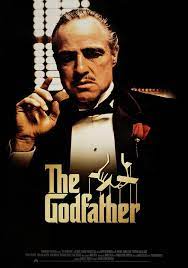Articles/Essays – Volume 07, No. 1
The Godfather | Francis Ford Coppola, dir., The Godfather
Readers may recall Rustin Kaufmann’s review of “The Graduate” which appeared in the Spring, 1969 issue of Dialogue. At the time Mr. Kaufmann had agreed to become a regular correspondent to these pages, but the surprising reaction of readers to his review (see Letters to the Editor, Summer, 1969) hurt Mr. Kaufmann’s feelings and he has declined to contribute until now. Since there is so much controversy raging over the movie “The Godfather,” we asked Mr. Kaufmann to review it for Dialogue, which he graciously agreed to do.
Mr. Kaufmann’s reviews appear regularly in the Idaho Hog Journal and in Better Hogs and Gardens. In addition, he writes a monthly column in Sweet Spud, the journal of the combined sugar beet and potato 4-H clubs in Southern Idaho.
We hope readers will find Mr. Kaufmann’s reviews as provocative as we have. Coming as he does from the hinterlands of Mormondom, we feel his grass roots insights are a welcome tonic for these troubled times.
I drove to the city to see “The Godfather.” I worried about it because it had an “R” rating. By way of comparison, “The Graduate” is now rated only “PG,” despite those lurid bed scenes with Mrs. Robinson, and the frequent taking of the Lord’s name in vain. So because “The Godfather” was rated “R,” I expected the worst. Half way to Idaho Falls, I nearly turned back. But now I can report to you that “The Godfather” is not deserving of its “R” rating. It’s relatively clean.
Oh, there is a scene of so-called heavy petting, between Sonny Corleone and one Lucy Mancini. But as it turns out, both Sonny and Miss Mancini are fully clothed and on their feet the whole time. The only other scene which might have warranted an “R” rating involved Michael Corleone’s honeymoon night in Sicily. In that scene, Michael finds himself facing his indecently-clad bride, Appolinia, contrary to the book version, wherein Michael leaves the bedroom to take a few drinks down the hall, leaving Appolonia to make bedtime preparations in his absence. So while the movie version is a bit more sensuous, it is far less alcoholic.
In “The Graduate,” you remember, Benjamin returns from college and wanders around in slovenly clothes, treating his betters with disrespect: By contrast, Michael, the hero of “The Godfather,” is spic and span and dressed in the uniform of his country, and commendably polite to everyone, as he comes home to attend the wedding of his sister. Instead of trying to join up with a yippie subculture, Michael is drawn more and more to his family traditions, until he gives up his law career to take the place of his ailing father in supervising family affairs.
The Corleone family is in some kind of business — olive oil, I think. In fact, they, seem to have a whole chain of enterprises. But other Italians try to encourage the Corleones to participate in a narcotics ring. When Don Vito Corleone refuses to do it, they shoot him down. But he is a strong and courageous man, with much to live for; and he clings to life in a hospital bed. Michael protects him from harm and helps to hold his business empire together. Following the tragic death of eldest brother Sonny, out on the expressway, Michael is entrusted with the whole family operation, even though he still has another older brother, Freddie. This disrespect for primogeniture and the patriarchal order shocks us, of course, but we must remember that occasionally a second or third son comes along who is possessed of such remarkable acumen that he is deserving of greater responsibility, as is the case in the Old Testament accounts wherein Jacob is elevated over the older Esau, Joseph over ^Reuben, and his brothers, arid Ephraim over Manasseh.
The key to understanding “The Godfather” is family solidarity. The Corleone family had once come to a hostile America to face privation and ethnic oppression. But they transcend these obstacles through their love for one another and through obedience to the dictates of the family patriarch, the “Don.” Central to their renewing their determination to perpetuate these traditions is a family gathering of the male members in the Corleone study. The men, one by one, kiss the hand of Don Vito Corleone, as they might kiss a Cardinal’s ring. I don’t know whether or not they hold these family gatherings in the home on a special evening of the week, or only on an ad hoc basis, but I find something familiar and praiseworthy about this method of teaching family customs and beliefs.
It’s a shame that there had to be so much killing in the story. All of us abhor the shedding of innocent blood. And it is almost as irresponsible for the movie makers to make appealing the senseless taking of life as to celebrate sexual promiscuity. But “The Godfather” is relatively free from unnecessary violence. Instead, the movie depicts a desperate situation, where the close-knit Corleone family is set upon by Emilio Barzini’s hoods, who are bent upon annihilating them. What killing the Corleones do, they do by way of self-defense.
When the picture ends, we have the feeling that the way has been cleared for the Corleone family to expand their olive oil imports, and perhaps to go into the hotel and restaurant business in Las Vegas, only 450 miles away from Salt Lake City. I could not help but think that this would put them in closer proximity to gospel influences, especially if the Church sees fit to open a Religious Information Center in that city.


 Back to full Issue
Back to full Issue

